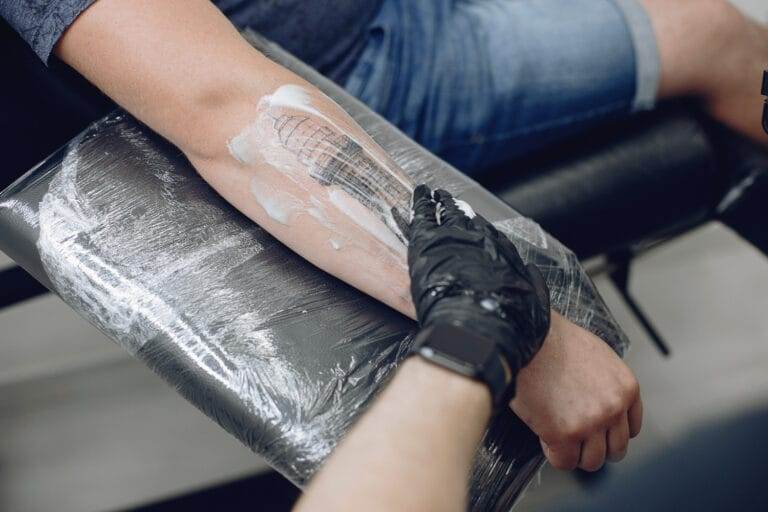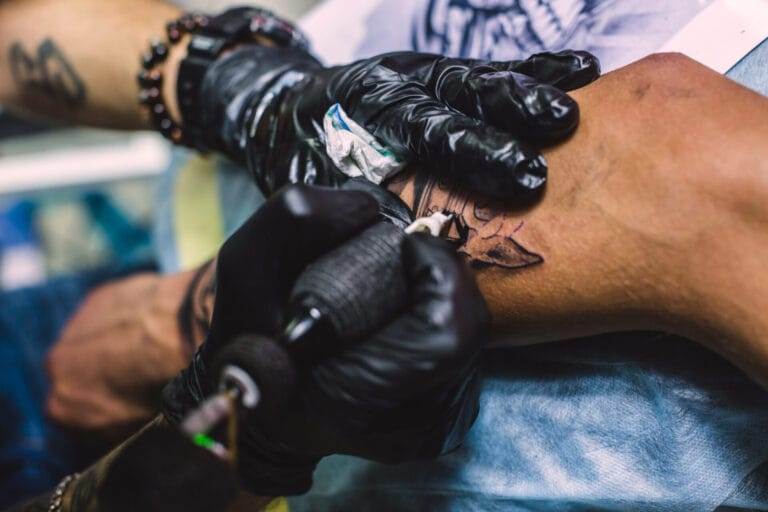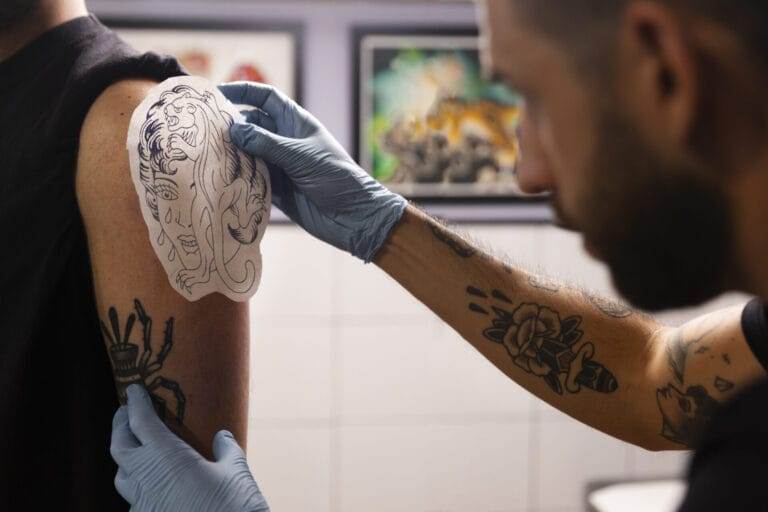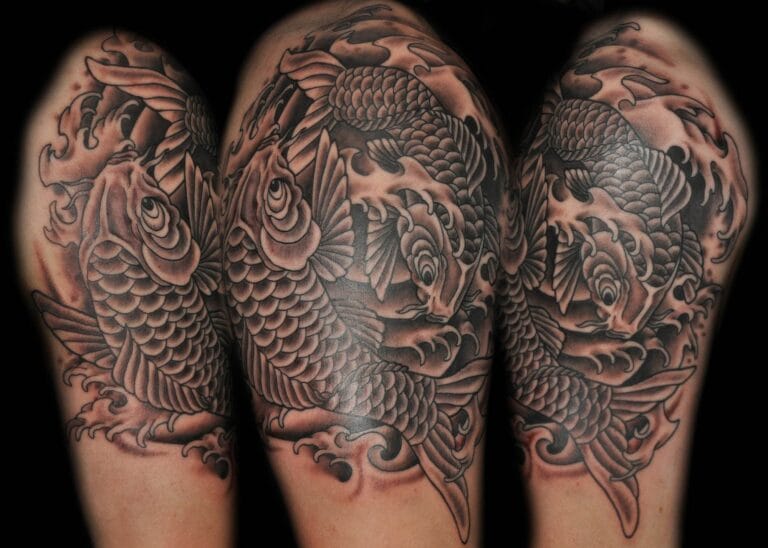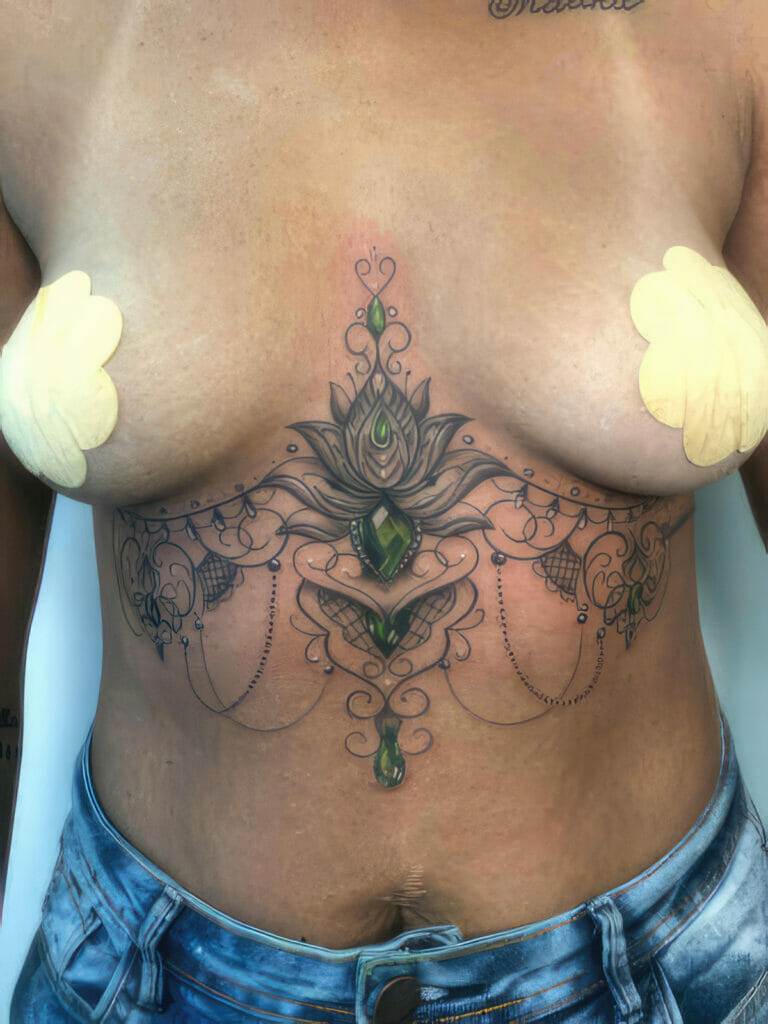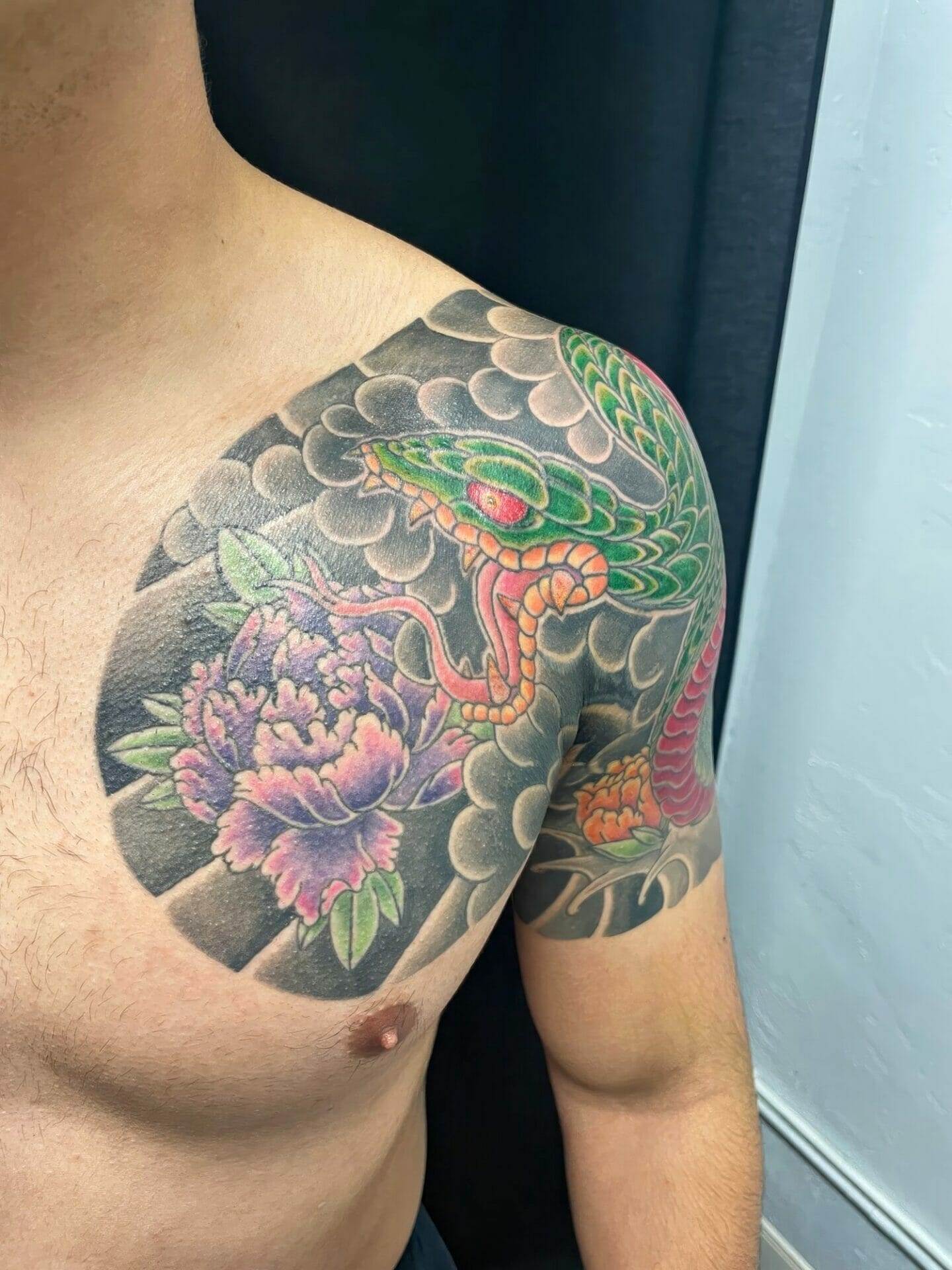
Japanese flower tattoos, also known as hanakotoba, have a rich history and hold great significance in Japanese art. These tattoos are not just beautiful designs, but they also carry deep meanings and symbolism. Flowers have always been an important part of Japanese culture, and their representation in tattoos is a way to honor and celebrate their beauty. In this article, we will explore the history of flower tattoos in Japanese culture, the symbolism behind different flowers, their use in traditional Japanese tattooing, their evolution in modern art, their role in literature and poetry, their influence on fashion, their cultural significance in Japanese society, the process of getting a flower tattoo in Japan, and the future of flower tattoos in Japanese art and culture.
The history of flower tattoos in Japanese culture
Tattooing has a long history in Japan, dating back thousands of years. The origins of Japanese tattoos can be traced back to the Jomon period (10,000 BCE – 300 BCE), where clay figurines with tattoo-like markings were discovered. However, it was during the Edo period (1603-1868) that tattooing became popular among the working class and criminals. These tattoos were used as a form of punishment and identification.
It was during the Meiji period (1868-1912) that tattooing started to become more accepted as an art form. Western influences began to shape Japanese society, and tattooing was seen as a barbaric practice. However, some artists continued to practice traditional Japanese tattooing, known as irezumi. These tattoos were often large and intricate, covering the entire body.
The symbolism of different flowers in Japanese art and their meanings
In Japanese art, different flowers hold different meanings and symbolism. Some of the most commonly used flowers in Japanese tattoos include cherry blossoms (sakura), peonies (botan), lotus flowers (hasu), chrysanthemums (kiku), and irises (ayame).
Cherry blossoms are one of the most iconic symbols of Japan. They represent the transient nature of life and the beauty of impermanence. Cherry blossoms bloom for a short period of time, reminding us to appreciate the present moment. Peonies symbolize wealth, prosperity, and good fortune. They are often associated with nobility and are considered a symbol of honor and respect.
Lotus flowers are a symbol of purity and enlightenment in Buddhism. They represent the journey towards spiritual awakening and the ability to rise above adversity. Chrysanthemums are a symbol of autumn and are often associated with the Emperor of Japan. They represent longevity, rejuvenation, and perfection. Irises symbolize courage and strength. They are often associated with samurai warriors and are considered a symbol of bravery.
The use of flower tattoos in traditional Japanese tattooing (irezumi)
Traditional Japanese tattooing, or irezumi, is a highly skilled art form that requires years of training and apprenticeship. The process involves using a hand-held needle to insert ink into the skin, creating intricate designs that cover large areas of the body.
Flower tattoos are often incorporated into traditional Japanese tattoos as part of larger compositions. They can be used to represent different aspects of nature, such as mountains, rivers, or landscapes. Flowers are also used to symbolize different emotions or qualities, such as love, beauty, or strength.
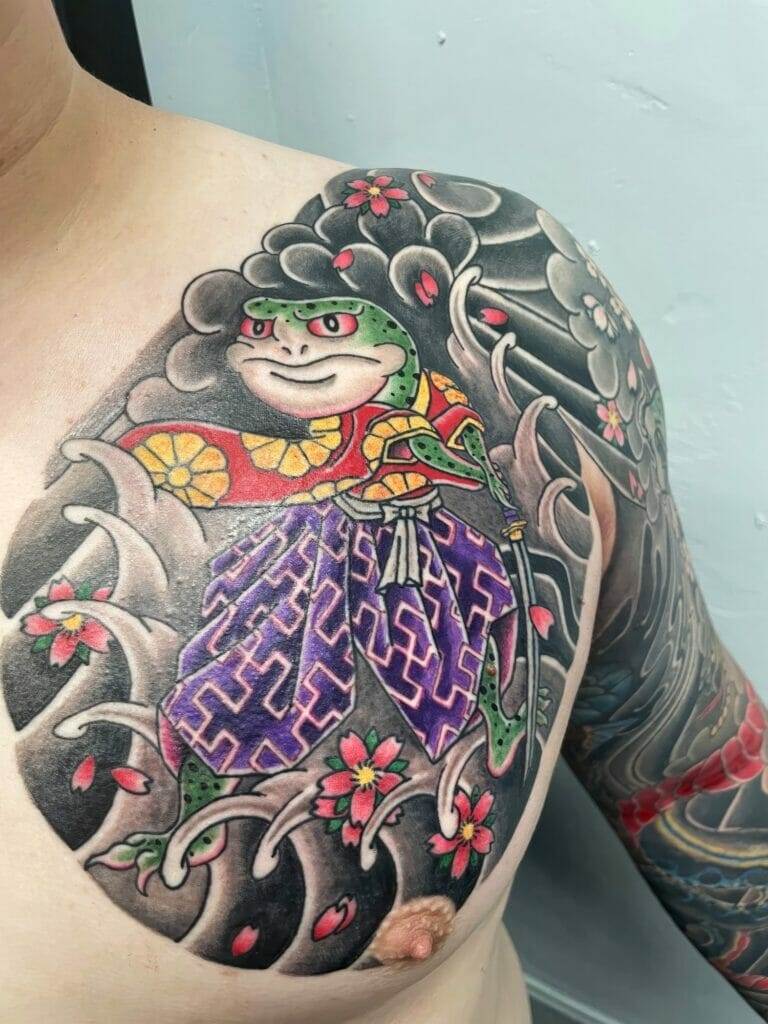
The evolution of flower tattoo designs in modern Japanese art
Over time, flower tattoo designs in Japan have evolved and changed. While traditional Japanese tattoos were often large and intricate, modern designs tend to be smaller and more minimalist. Artists are experimenting with different styles and techniques, incorporating elements from other art forms such as watercolor or abstract art.
Modern Japanese artists are also finding new ways to incorporate flowers into their work. They are using different colors, textures, and patterns to create unique and innovative designs. Flowers are no longer just a decorative element, but they are also used to convey deeper meanings and emotions.
The role of flower tattoos in Japanese literature and poetry

Flower tattoos have long been referenced in Japanese literature and poetry. In traditional Japanese literature, flowers are often used as symbols to represent different emotions or themes. For example, cherry blossoms are often used to symbolize the fleeting nature of life, while lotus flowers are used to represent enlightenment and spiritual awakening.
In Japanese poetry, known as haiku, flowers are often used as seasonal references. Each season is associated with different flowers, and these references help to create a sense of time and place. Flowers are also used to evoke certain moods or emotions, such as sadness or joy.
The influence of flower tattoos on contemporary Japanese fashion
Flower tattoos have had a significant influence on Japanese fashion. They have become a popular motif in clothing, accessories, and even hairstyles. Japanese designers are incorporating flower tattoos into their designs, creating unique and innovative pieces that celebrate the beauty of nature.
Flower tattoos have also influenced the way people dress in Japan. Many people choose to wear clothing that features floral patterns or designs, as a way to express their love for nature and their connection to the natural world.
The cultural significance of flower tattoos in Japanese society
In Japanese society, flower tattoos hold great cultural significance. They are seen as a form of self-expression and a way to honor and celebrate the beauty of nature. Flower tattoos are often associated with traditional values such as respect, honor, and bravery.
However, there is still some stigma attached to tattoos in Japan. While attitudes towards tattoos are slowly changing, they are still often associated with criminality or rebellion. Many public places such as hot springs, swimming pools, and gyms still have strict no-tattoo policies.
The process of getting a flower tattoo in Japan
Getting a tattoo in Japan is a process that requires careful consideration and planning. It is important to find a reputable tattoo artist who specializes in Japanese-style tattoos and has a good understanding of the symbolism behind different flowers.
The process of getting a tattoo in Japan usually involves multiple sessions, as the designs are often large and intricate. The artist will work closely with the client to create a design that is unique and meaningful to them. The tattooing process itself can be quite painful, as it involves using a hand-held needle to insert ink into the skin.
The future of flower tattoos in Japanese art and culture
The future of flower tattoos in Japanese art and culture is bright. As attitudes towards tattoos continue to change, more and more people are embracing them as a form of self-expression. Japanese artists are pushing the boundaries of traditional tattooing, creating innovative designs that incorporate flowers in new and exciting ways.
In conclusion, Japanese flower tattoos have a long and rich history in Japanese art and culture. They hold deep meanings and symbolism, representing different aspects of nature, emotions, and qualities. Flower tattoos have evolved over time, from large and intricate designs to smaller and more minimalist ones. They have influenced various aspects of Japanese culture, including literature, poetry, fashion, and society. As attitudes towards tattoos continue to change, flower tattoos will continue to evolve and play an important role in Japanese art and culture.
If you’re fascinated by the beauty and symbolism of flower tattoos in Japanese art, you might also be interested in learning about cover-up tattoos and how they are made. Check out this informative article from Redemption Ink that explores the world of cover-up tattoos, what they are, and the techniques used to create them. Discover how skilled tattoo artists like R2 can transform old or unwanted tattoos into stunning works of art. Read more

